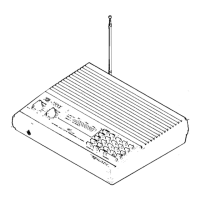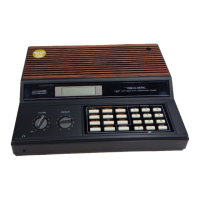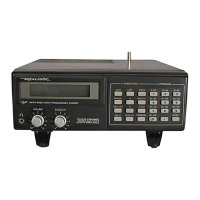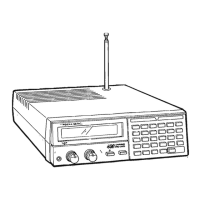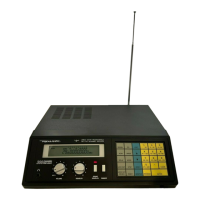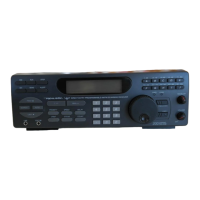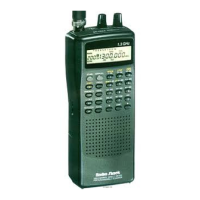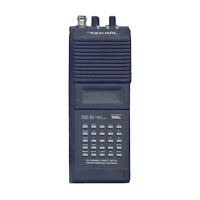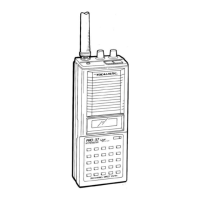Do you have a question about the Realistic PRO-2027 and is the answer not in the manual?
Feature for fast frequency searching at up to 50 steps per second.
Organizes channels into 10 banks of 10 channels each for easy identification.
Pauses scanning for 2 seconds after a transmission to hear replies.
Retains stored channel frequencies for up to 1 hour without power.
Prevents selected channels from being scanned during operation.
Keeps track of important calls on a specified channel by checking it periodically.
Temporarily saves up to ten located channels during a search.
Shows the selected channel, frequency, and current operational status.
Instructions for attaching and adjusting the telescoping antenna for reception.
Guide to powering the scanner using the standard AC power cord.
Guide to connecting headphones for private listening.
Guidelines for protecting hearing while using headphones with the scanner.
Steps to reset the scanner display using the reset button.
Procedure to clear memory and reinitialize the scanner.
Explains the various indicators and symbols on the scanner's display screen.
Describes the function of each key on the scanner's control panel.
Explains how channels are grouped into 10 banks of 10 channels each.
Details the use of 10 temporary monitor memories for storing frequencies.
How to adjust audio volume and squelch levels for clear reception.
Step-by-step guide to programming frequencies into the scanner's channels.
Searching within a user-defined lower and upper frequency range.
Searching up or down from the current channel's displayed frequency.
Feature to pause scanning after a transmission for two seconds.
Options for adjusting scanning and search speeds (channels/steps per second).
How to exclude specific channels from scanning to improve efficiency.
How to enable or disable specific channel storage banks for scanning.
Identifies internal generated signals that can cause noise on frequencies.
Information about line-of-sight reception and NOAA weather broadcasts.
Pointers on finding active frequencies in local areas for monitoring.
Details frequencies used by various services like police, fire, and aircraft.
List of abbreviations for services and agencies mentioned in band usage.
List of government agencies and their corresponding abbreviations.
Lists specific frequencies used by different services and bands.
Solutions for when the scanner fails to power on or operate.
Troubleshooting steps for signal reception problems.
How to handle errors that appear on the scanner's display.
Solutions for unresponsive keys or a randomly behaving display.
How to resolve issues when a frequency entry is not accepted.
Best practices for keeping the scanner dry, clean, and safely handled.
Guidance on temperature and dust to maintain scanner performance.
Details the range of frequencies the scanner can cover and step sizes.
Information on the number of channels, banks, and monitor channels available.
Technical specifications for signal reception sensitivity across different bands.
Data on how well the scanner rejects unwanted or spurious signals.
Technical details on the scanner's ability to separate nearby signals.
Specifies the speed of scanning operations in channels per second.
Specifies the speed of search operations in steps per second.
Details the timing interval for checking the priority channel.
Specifies the duration of the scan delay feature.
Technical data on the scanner's handling of modulated signals.
Intermediate frequency specifications for the scanner's receiver.
Technical specification for the squelch threshold level.
Electrical characteristic of the antenna connection.
Specification for the scanner's built-in speaker output power.
Details about the integrated 3-inch speaker.
Electrical requirements for operating the scanner (voltage, wattage).
Physical size measurements of the scanner.
Physical weight of the scanner without the antenna.
| Channel Storage | 200 channels |
|---|---|
| Channels | 200 |
| Mode | AM, FM, WFM |
| Type | Scanner |
| Frequency Range | 108-174 MHz |
| Modulation Modes | AM, FM |
